The 8 Best Canon Rebel SL2 Lenses for Beginners on a Budget
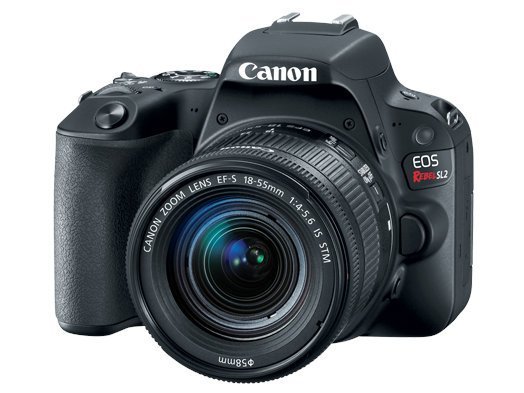
Here is a list of the best lenses for the Canon EOS Rebel SL2. A wide variety of focal lengths for several kinds of photography are covered. In addition to the recommended lenses, each choice will have additional options for lower or higher prices.
There are enough options available that virtually every photographer will be able to find something they’d want in their camera bag.
Best Canon Rebel SL2 Lenses:
Affiliate Advertising Disclosure
Outside the Shot is a participant in the Amazon Services LLC Associates Program, an affiliate advertising program designed to provide a means for sites to earn advertising fees by advertising and linking to Amazon.com.
As an eBay Partner, I may be compensated if you make a purchase. I also participate in affiliate advertising programs with KEH and Adorama. More can be found on the Affiliate Discolsure page.
- Best All-Around Zoom: Canon EF-S 17-55mm f/2.8 IS USM
- Best Telephoto Zoom: Sigma 18-300mm f/3.5-6.3 DC OS
- Best Prime Lens: Canon EF 50mm f/1.8 STM
- Best Lens for Video: Canon EF-S 10-18mm f/4.5-5.6 IS STM
- Best Lens for Portraits: Canon EF 85mm f/1.8 USM
- Best Lens for Sports & Wildlife: Tamron SP 150-600mm f/5-6.3 Di VC USD G2
- Best Lens for Landscapes: Canon EF 20mm f/2.8 USM
- Best Lens for Macro: Canon EF-S 60mm f/2.8 Macro USM
Types of Lenses
1. Standard Lenses
- Focal Length: Roughly between 40mm and 60mm, with 50mm being the most common.
- Characteristics: Provides a field of view similar to the naked eye, resulting in a natural-looking scene without distortion.
- Uses:
- Portraits
- Street Photography
- Indoor Photography
- Landscape Photography
2. Telephoto Lenses
- Focal Length: Above 60mm. Mid-range telephoto is around 70mm to 200mm, while super-telephoto is over 200mm.
- Characteristics: Magnifies subjects, allowing for capturing distant subjects.
- Uses:
- Portrait Photography (especially mid-range telephoto)
- Wildlife Photography
- Sports Photography
- Astronomy
3. Wide Angle Lenses
- Focal Length: Below 40mm. Lenses with a focal length less than 20mm are generally referred to as fisheye lenses.
- Characteristics: Captures a wider field of view, but may introduce distortion.
- Uses:
- Landscapes
- Interiors
- Large Group Photos
- Street Photography
- Architecture
4. Macro Lenses
- Characteristics: Designed for close-up photography with a 1:1 ratio, capturing subjects at life-size magnification.
- Uses:
- Nature Photography
- Insect Photography
- Portrait Photography
- Detail Photography (e.g., ring shots at weddings)
5. Prime Lenses
- Characteristics: Fixed focal length lenses (e.g., 35mm, 50mm, 85mm). They do not zoom and often provide sharper images and better overall image quality than zoom lenses.
- Advantages: Can shoot at lower apertures, allowing more light in and creating more background blur.
6. Zoom Lenses
- Characteristics: Allows changing through the focal range by turning the barrel. Can be variable or fixed aperture zoom lenses.
- Advantages: Provides multiple focal lengths in one lens, making them versatile for situations where you need to zoom in or out without changing the lens.
All-Around Best Zoom Lenses
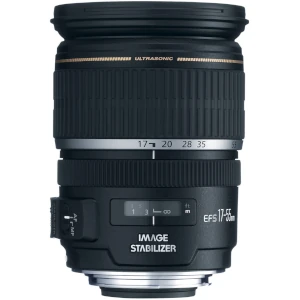
Canon EF-S 17-55mm f/2.8 IS USM: The build quality of this lens is what you would expect from Canon’s full-frame L-series, but it is meant for Cameras that have APS-C sensors that have the EF-S mount. It is a major improvement from the standard zoom lens included with the EOS Rebel SL2.
A shallow depth of field with a fantastic background blur is available through the zoom range because of the constant large maximum aperture. Built-in image stabilization helps to counteract camera shake and contributes to photo sharpness.
If you had to reduce all the Canon lenses obtainable to a single one to use, this is going to be the best choice.
See current price and more information on:
Sigma 17-50mm f/2.8 EX DC OS HSM FLD: By having image stabilization, sharp images can be captured at shutter speeds up to 4 stops lower than if there was no stabilization. With the fast aperture and good zoom range, the lens is perfect for all kinds of photography from landscapes to portraits.
Judging by the glowing customer reviews, users love this lens. It could become your go to pick.
See current price and more information on:
Canon EF-S 15-85mm f/3.5-5.6 IS USM: With a comparable zoom range of 24-136mm in FX format, it is a great pick for general photography. It is additionally one of the ideal selections for a single lens to bring with you while traveling.
See current price and more information on:
Best Telephoto Zooms
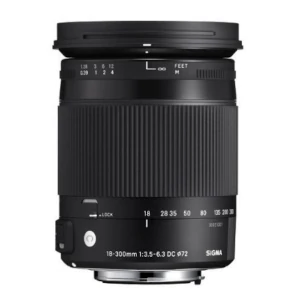
Sigma 18-300mm f/3.5-6.3 DC OS: This is like having several zooms combined together. With a 16.6x zoom ratio, everything from wide angle to telephoto are available. Built with 17 elements in 13 groups, with four FLD and 1 SLD element, means it is possible to get sharp crisp, high-quality shots, without having to be concerned with optical imperfections.
The sizeable focal length span will have the expense of it being rather large and heavy. There are other options that can be more comfortable to dedicate all day walking around with the Canon EOS Rebel SL2.
See current price and more information on:
Canon EF-S 18-200mm f/3.5-5.6 IS: This serves as a lightweight and very compact lens that still has a good zoom range. With 4 stops of stabilization it is a product that offers impressive performance at an easily affordable cost. This will likely be the lens to get to avoid excessive size and weight.
See current price and more information on:
Canon EF 75-300mm f/4-5.6 III: Lighter weight and smaller than the other lenses previously mentioned, which is an advantage if you don’t want to haul around a hefty camera. The focal length is equal to 120-480mm on every EOS Rebel camera as they use Canon APS-C sensors.
Additionally, it is quite cheap, because it does not have image stabilization. This lens works best outside with lots of sunlight.
See current price and more information on:
Best Primes
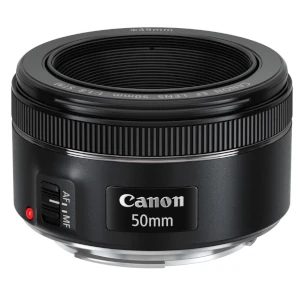
Canon EF 50mm f/1.8 STM: Superb image level of quality in a small and lightweight package that’s one of the best lenses developed by Canon. The fast f/1.8 aperture makes this timeless focal length an ideal choice for low light photography. An invaluable lens for all photographers that can find a use in every camera kit.
Avoid buying the old version because the motor that powers the focusing system is slow and loud. You will probably not be fond of the outcome of attempting to save a bit of money. This is especially applicable if you are planning to have the ability to shoot video.
See current price and more information on:
Canon EF-S 24mm f/2.8 STM: The slimmest and smallest lens built for Canon’s EF-S mount. A true “pancake” wide angle lens that causes it to be an outstanding solution for travel photography as the overall size is hard to beat. The closest focus distance pictures can be taken at is 6 inches (16cm).
See current price and more information on:
Sigma 35mm F1.4 Art DG HSM: A superb creation showing what contemporary optical engineering is capable of. Shot wide open, photographs are razor sharp, across the entire image. The HSM (hyper-sonic motor) provides accurate, quite, and fast autofocus.
See current price and more information on:
Best Lenses for Video & Vlogging
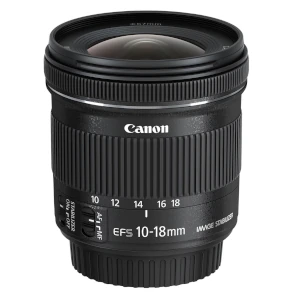
Canon EF-S 10-18mm f/4.5-5.6 IS STM: Out of all the lenses for Canon, this is the best choice for capturing video. The ultra-wide-angle zoom range is perfect for vlogging and creating videos. The stepping motor (STM) delivers smooth accurate autofocus that won’t make any noise which can ruin recording audio. Furthermore, it is small and light weight enough to not feel heavy while combined with the Canon EOS Rebel SL2.
You can purchase it bundled with the Canon 50mm f/1.8 STM in the portrait and travel two-lens kit. The bundle is a very good solution if you want to end up with 2 of the best lenses for Canon, while at the same time saving a bit of money.
See current price and more information on:
Tokina AT-X 116 PRO DX-II 11-16mm f/2.8: It is easy to switch from AF to MF without removing your hand from the focus ring since there is the one-touch focus clutch. With a large f/2.8 constant aperture this lens is also an ideal way to do astrophotography.
See current price and more information on:
Sigma 10-20mm f/3.5 EX DC HSM ELD SLD: Here’s another wide angle zoom that is full of optical innovation. Internal focusing allows the use of a petal-type lens hood which generally does a better job of blocking light than a round lens hood. Quiet functionality is assured by a hyper sonic motor.
See current price and more information on:
Best Portrait Photography Lenses
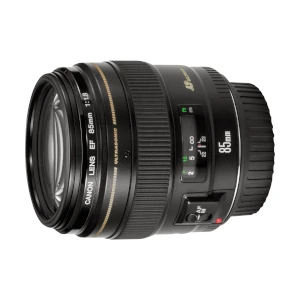
Canon EF 85mm f/1.8 USM: Many people would consider this the most liked lens for portrait photography built by Canon. The large f/1.8 aperture is an excellent option for working in low light and is able to create a shallow depth of field, with great bokeh, to separate the photo subject. For wedding photographers, this is a necessary lens to get.
See current price and more information on:
Sigma 50mm F1.4 Art DG HSM: A true pro level lens that’s a good choice for portrait photography ın addition to studio work, street, and landscape. There’s hardly any distortion or vignetting and it is tack sharp from corner to corner, even shot wide open.
See current price and more information on:
Canon EF 100mm f/2 USM: Very close to the Canon 85mm f/1.8, but has a "" narrower field of view. Compared to the other two lenses, it’s terrific for low-light shooting in a small package that’s comfortable to use.
This is a discontinued lens, so finding one in stock may be hard. Many pre-owned copies are still readily available. Make sure to check several sites to obtain the lowest price.
See current price and more information on:
Best Sports & Wildlife Lenses
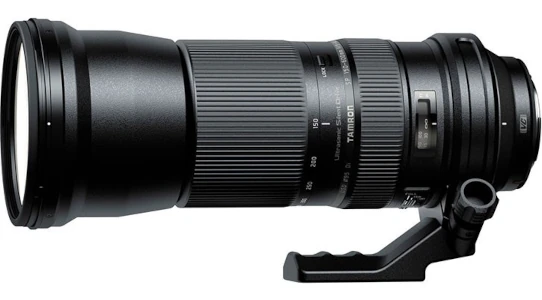
Tamron SP 150-600mm f/5-6.3 Di VC USD G2: Tamron made a big advancement with the production of this 2nd generation lens. Image quality level has improved through the complete zoom range while having a great build quality. An ultrasonic silent drive motor powers the autofocus system that is incredibly fast and precise. With this mounted on your camera, you will experience no issues getting awesome action or wildlife pictures.
See current price and more information on:
Sigma 150-600mm f/5-6.3 Contemporary DG OS HSM: The Sigma is built with a streamlined and light build for a telephoto zoom lens. In addition to the optical stabilization and hyper sonic motor, it has a a built-in accelerometer that will help improve shots when panning. As added bonus, there’s usually a promo deal that is comprised of additional items and free shipping when you buy the lens. That’s great seeing as free camera gear is tough to turn down.
See current price and more information on:
Canon EF 100-400mm F4.5-5.6L IS II USM: Without a doubt, the lens has much better photo quality than the other two. That being said, high performance goes along with a substantial cost that is significantly larger than that of the camera. One of the several notable features of this lens is a rotation-type zoom ring which includes configurable torque control making it possible to customize the lens to your personal taste.
See current price and more information on:
Best Landscape Photography Lenses
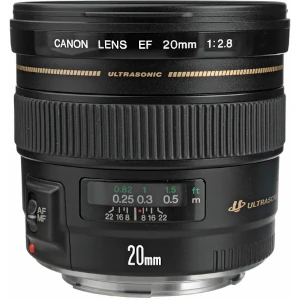
Canon EF 20mm f/2.8 USM: Coming in at only 405g (14.3 oz), this lens is a wide angle that is small and light. There is a manual focus override, even when set to AF, which makes it easier to nail focus. If you plan to go hiking with the Rebel SL2, this lens is a superb solution as it is going to fit in almost every camera bag.
See current price and more information on:
Samyang 14mm f/2.8 IF ED UMC: Boasting a integrated petal-type lens hood, this ultra-wide-angle lens is a low cost option. An outstanding pick for not only landscapes but as well as for real estate and astrophotography. Pictures can be shot as close as 10.8 inches (14 cm), but the results will have exaggerated distortion.
See current price and more information on:
Sigma 20mm f/1.4 DG HSM Art: The widest lens in the Sigma Art series, the 20mm f/1.4 has got a truly pro build. Having 15 elements in 11 groups with a 5 Special Low Disperson and a Low Dispersion glass element, axial chromatic aberration, spherical aberration, and field curvature have all been minimized.
It is a rather large and heavy hunk of glass. You shouldn’t anticipate the lens to be nicely balanced when on the camera.
See current price and more information on:
Best Canon Lenses for Macro
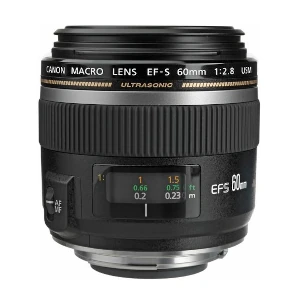
Canon EF-S 60mm f/2.8 Macro USM: The first to be produced for the EF-S mount, this is a real macro lens, capable of obtaining 1:1 magnification. It has an internal focusing system, so the front element doesn’t rotate. You will appreciate the razor sharp images taken by this lens. It is a very good pick to use with the EOS Rebel SL2 on account of the compact size and reasonable price being tough to beat.
See current price and more information on:
Canon EF 100mm f/2.8L Macro IS USM: With optical stabilization and internal focusing, it’s clear why this is a professional L-series lens. It is a great choice to bring out into the field because it is weather sealed. Purchase this lens and you will not need to go searching for another solution.
See current price and more information on:
Tamron AF 90mm f/2.8 Di SP A/M 1:1 Macro: With a good working distance and recessed front element, you’ll probably never be required to make use of the lens hood. Having said that, it does not have an internal focusing system, so the lens will extend when focusing on close subjects.
One other possible drawback if you desire to use it for portraits is that it does not have any kind of built-in image stabilization. That will not be an issue if the lens is used with flash.
See current price and more information on:
Canon EF Lens Terminology
-
ASC (Air Sphere Coating): Introduced in 2014 with the 100-400mm f/4.5-5.6 L IS II, ASC reduces ghosting and flare in backlit situations. This lettering might not appear on the lenses themselves but will appear on the box or packaging of the lens.
-
BR (Blue Spectrum Refractive): BR signifies a newer type of organic lens element. This element works to reduce chromatic aberration by correcting the blue and purple wavelengths. Currently, the 35mm f/1.4 L II is the only Canon lens with this BR element.
-
SA Control: This term was not mentioned in the provided content.
-
DS (Defocus Smoothing): DS made its first appearance in 2019 on the RF 85mm f/1.2 DS. It is Canon’s version of a lens with a built-in apodization filter – a circular graduated neutral filter located behind the lens elements. It helps to smooth out out-of-focus areas in an image, particularly bokeh balls.
-
IS (Image Stabilization): Canon’s acronym for optical image stabilization. This technology stabilizes a hand-held camera using gyros that counteract minute movements of the camera. By moving some of the lens’ optical elements, this technology counters shakes and provides sharper results when a slower shutter speed is used for a static subject.
-
USM (UltraSonic Motor): An indicator of a lens being equipped with Canon’s top-of-the-line focusing motor. USM is used in most of the latest Canon lenses. This motor allows for powerful, fast, and quiet autofocus and permits full-time manual focus override.
-
Micro USM: A smaller and cheaper version of the USM design meant for low-end lenses and kit zoom lenses. It is noisier than USM and, with the exception of the 50mm f/1.4, does not allow for a manual focus override.
-
DC (Direct Connect): A DC geared motor is a feature of some of the older or more affordable lenses that Canon offers. Lenses with a DC motor tend to be slower to focus and noisier than USM or Micro USM models. They also do not offer a full-time manual focusing feature.
-
STM (Stepper Motor): A motor that allows for a smoother and quieter focus by minimizing the autofocus vibrations and noise during video recording. STM lenses use a focus-by-wire system, meaning the focus ring controls a motor, which then moves the internal lens elements.
-
I, II, III: These roman numeral markings on lenses signify the lens’ generation. They represent the upgraded version or the revision number. For instance, a lens marked III is newer than one marked II.
-
SC & SSC (Spectra Coating & Super Spectra Coating): Acronyms for coatings applied to optical lens elements to increase contrast and decrease flare and reflections. While SC was used for cheaper lenses, SSC was meant for the more expensive ones. As modern lenses are coated with complex multi-coats, SSC is no longer in use.
-
SWC: This term was not mentioned in the provided content.
-
AFD (Arc-From Drive): Canon’s very first autofocus motor technology, which is no longer in use. The lenses were noisier and slower to focus than other lenses and had no manual override.
-
MM (Micro Motor): Developed to create less expensive versions of the AFD motor. It turned out to be the least advanced AF motor in use, being even slower and noisier than the AFD motor. It does not permit full-time manual focus override.
-
KAS S: This term was not mentioned in the provided content.
-
VR: This term was not mentioned in the provided content.
Related Posts
Below are articles related to the Canon Rebel SL2 camera: